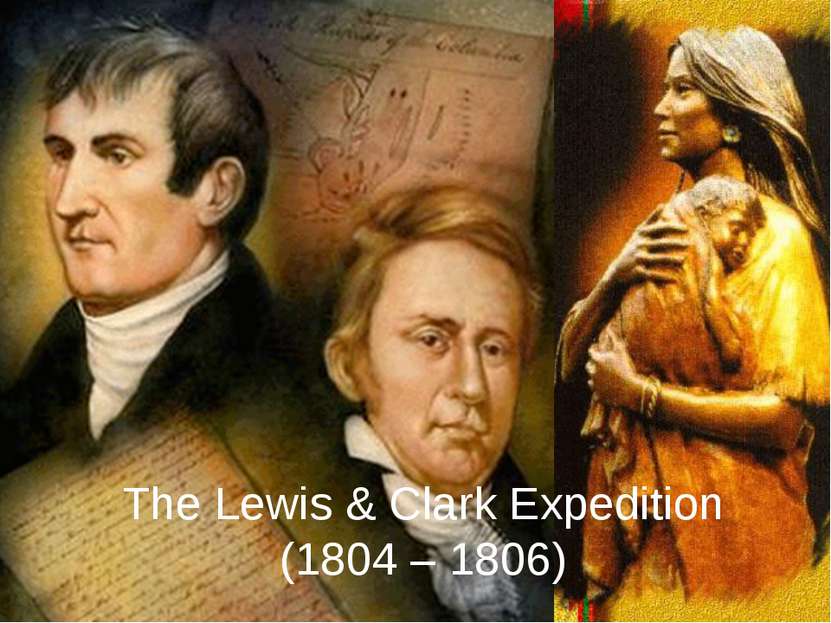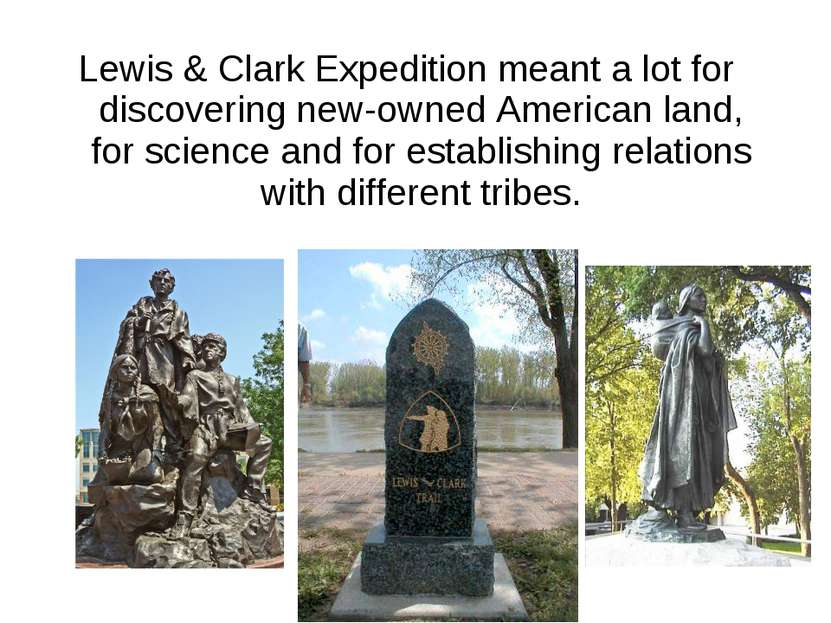X
Код презентации скопируйте его
The Lewis and Clark expedition
Скачать эту презентациюПрезентация на тему The Lewis and Clark expedition
Скачать эту презентациюCлайд 2
 The Aims The Lewis and Clark Expedition (1804–1806) was the first United States expedition to the Pacific Coast. It was sent by President Thomas Jefferson and led by Meriwether Lewis and William Clark. Their objects were both scientific and commercial - to study the area's plants, animal life, and geography, and to discover how the region could be exploited economically. Jefferson placed special importance on declaring U.S. sovereignty over the Native American tribes along the Missouri River, and getting information about the resources in the recently-completed Louisiana Purchase.
The Aims The Lewis and Clark Expedition (1804–1806) was the first United States expedition to the Pacific Coast. It was sent by President Thomas Jefferson and led by Meriwether Lewis and William Clark. Their objects were both scientific and commercial - to study the area's plants, animal life, and geography, and to discover how the region could be exploited economically. Jefferson placed special importance on declaring U.S. sovereignty over the Native American tribes along the Missouri River, and getting information about the resources in the recently-completed Louisiana Purchase.
Cлайд 3
 Sacagawea They were accompanied by a fifteen year old Shoshone Indian woman, Sacagawea, the slave wife of a French-Canadian fur trader. Her son was born in 1805 with the help of the expedition. She served as an interpreter.
Sacagawea They were accompanied by a fifteen year old Shoshone Indian woman, Sacagawea, the slave wife of a French-Canadian fur trader. Her son was born in 1805 with the help of the expedition. She served as an interpreter.
Cлайд 4
 Journey There were 33 people, including 29 participants in training at the 1803–1804 Camp Dubois winter staging area in Illinois Territory. They left on May 14, 1804. The ships followed the Missouri River westward.
Journey There were 33 people, including 29 participants in training at the 1803–1804 Camp Dubois winter staging area in Illinois Territory. They left on May 14, 1804. The ships followed the Missouri River westward.
Cлайд 5
 Soon they passed La Charrette, the last Euro-American settlement on the Missouri River. During the final week of August, Lewis and Clark reached the edge of the Great Plains.
Soon they passed La Charrette, the last Euro-American settlement on the Missouri River. During the final week of August, Lewis and Clark reached the edge of the Great Plains.
Cлайд 6
 The Lewis and Clark Expedition established relations with two dozen indigenous nations. Without their help, the expedition would have starved to death or become hopelessly lost in the Rocky Mountains.
The Lewis and Clark Expedition established relations with two dozen indigenous nations. Without their help, the expedition would have starved to death or become hopelessly lost in the Rocky Mountains.























